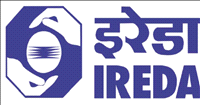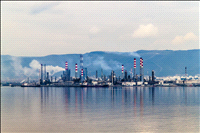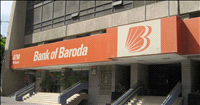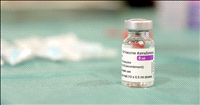Japan’s key economic data figures plunge
30 Jan 2009
Japan's three key economic figures announced today showed a decline; industrial output fell at a record pace in December, consumer spending slowed down drastically along with unemployment touching close to a three-year high.
Japanese businesses were battered by a global slowing of demand, with exports plummeting 35 per cent and bankruptcies surging 24 per cent year-on-year in December. (See: Japan's exports plunge 35 per cent in December) indicating that Japan is heading for a deeper recession.
Economy minister Kaoru Yosano said, "when the economy will bottom out, is impossible to predict'' as this time "the problem relates not only to domestic but to global conditions."
December's industrial output recorded a substantial decline of 9.6 per cent from the previous month, while the three months to December showed a steep fall of 11.9 per cent due to slowing down of exports, leading to apprehension of the economy sinking into deeper recession.
Japanese exporters have been suffering amidst the yen's surge to a 13-year high and the global financial meltdown.
Japan's seasonally adjusted unemployment rate soared at the fastest rate in about 42 years at 4.4 per cent in December, reaching the highest joblessness in almost three years as a large number of companies were forced to resort to massive layoffs as their profits took a hit due to deteriorating demand.
According to the government 2.7 million people were unemployed in December, an increase of 390,000, or 16.9 per cent from the previous year.
For the first time since 1949, carmaker Toyota Corp reported an annual operating loss in 2008-09. Most major car manufacturers have cut production as well as employees.
While drawing up the GDP estimates last month, the government projected the unemployment rate to worsen to 4.2 per cent for the fiscal year ending March 2009, up from the previous estimates of 3.8 per cent for the current fiscal year. (See: Japan projects no growth in 2009)
Fears of deflation
Household spending data showed a decline of 4.6 per cent in December from the previous year as consumers become conscious of the recession and stopped splurging.
Inflation slowed down sharply in December from 2.4 per cent in July-August as oil prices fell from their peak of $147 per barrel in July 2008 to below $40 in December. Domestic demand also reduced with jobs losses escalating.
Core consumer prices rose 0.2 per cent in December from a year earlier, compared to 1.0 percent increase in November and the core inflation peaked at 2.4 per cent in July and August 2008.
There are apprehensions that deflation could return as seen after the economic bubble burst in the early 1990s and early 2000s, where the government used quantitative easing method by pumped more reserves into the banking system.
Japan's manufacturers are predicting output to fall 9.1 per cent in January and a further 4.7 per cent in February on fears that the economic downturn could be the longest and possibly the deepest that the country has faced in recent times.
The Japanese government opened a 1.5 trillion yen ($16.7 billion) sustenance package to companies threatened by the global financial crisis, in a move to ease the credit crunch, the dwindling economy from bankruptcies and in the wake of massive job cuts by companies.(See: Japan opens $16.7-billion package for small companies)
The Japanese government is pursuing all out efforts to introduce measures to revive the economy and to some extent adopted the United States policy of bailing out sectors like the auto and small companies, in addition to the financial sector to augments cash to companies facing credit crunch.
The government increased its economic stimulus plan by ¥23 trillion ($255 billion) while central bank cut interest rates to near zero after the yen soared (See: Japan hints at rate cut after yen surges)
The Bank of Japan cut its growth forecasts, as it feels that the country's economy would contract for two full years through March 2010.
The impact of these measure is likely to be seen in the later half of this year, as not only in Japan, but every other government has come out with measures to stimulate the economy.
The US Fed has kept has interest rates unchanged at between zero and 0.25 per cent, while President Barack Obama's $825-billion economic recovery plan, approved by the US House of Representatives, awaits Senate approval, (See: Obama visits Republicans to push relief bill).
Yesterday, US President announced plans to inject another $2 trillion to make the bank start lending again to help get the US economy pull back from the credit squeeze. (See: Obama plans $2 trillion injection into US banks)
Germany has unveiled its second stimulus package (See: Germany unveils €50-billion second stimulus)
Unlike the past, where governments failed to act quickly, this time round every government acted swiftly, either individually or in concert with others to combat the economic decline.
Leaders of China, Japan and the Republic of Korea sealed a historic tripartite partnership to tackle the global financial crisis on 15 December in Japan's Fukuoka Prefecture. (See: China, Japan, South Korea sign historic trilateral deal)
However, analysts point out that despite the mammoth response, it will be long haul back to recovery.















.jpg)













